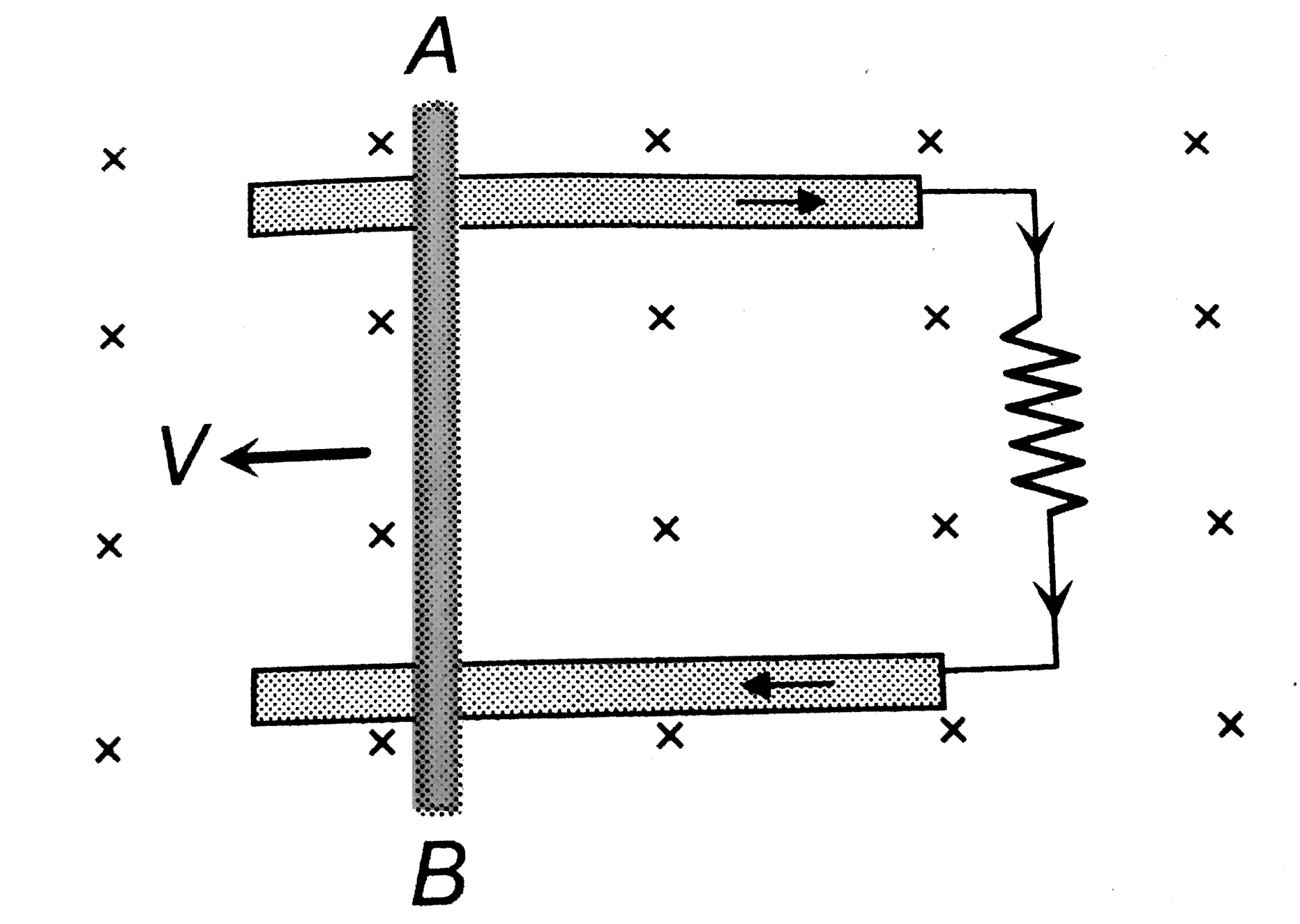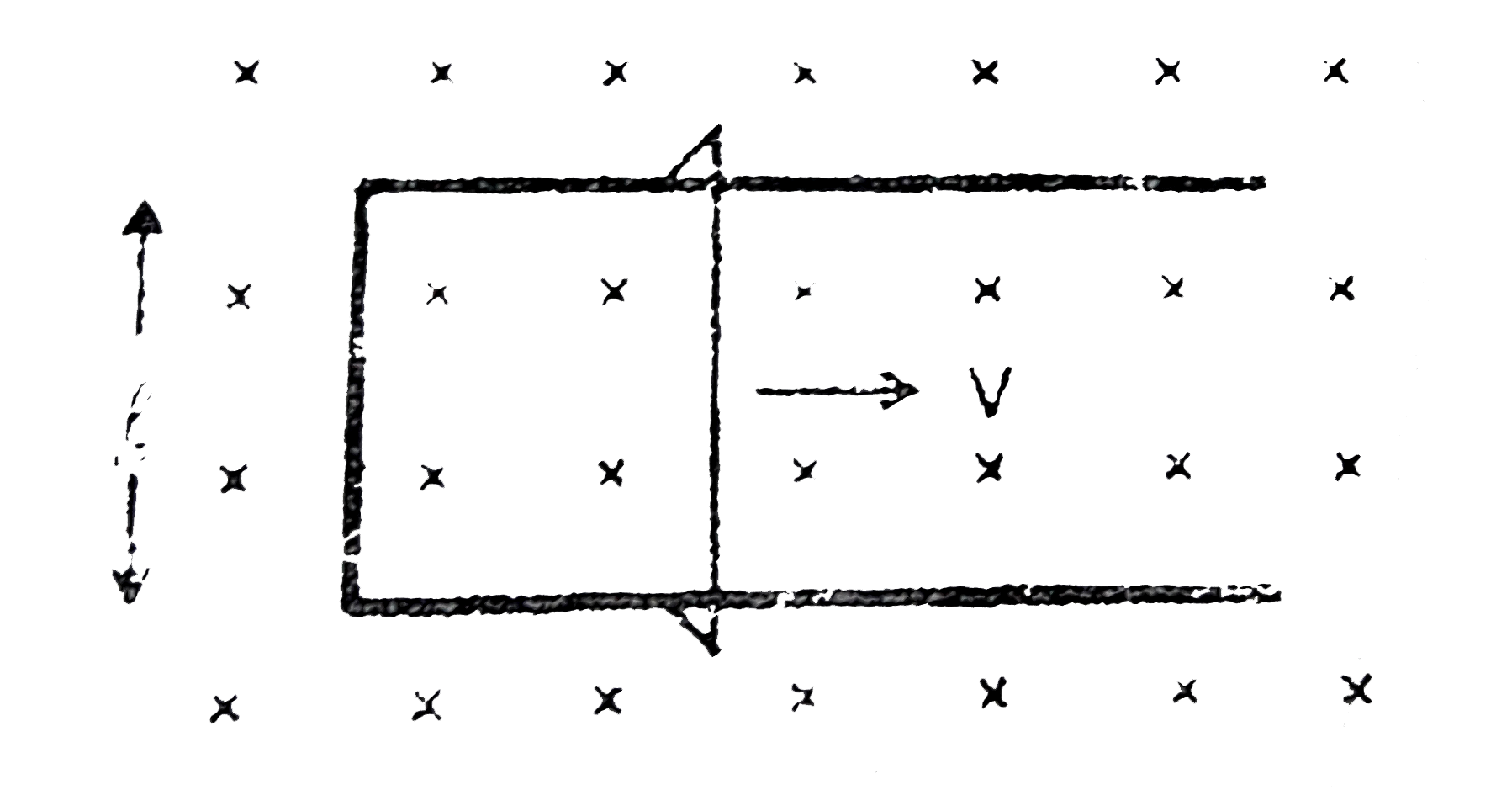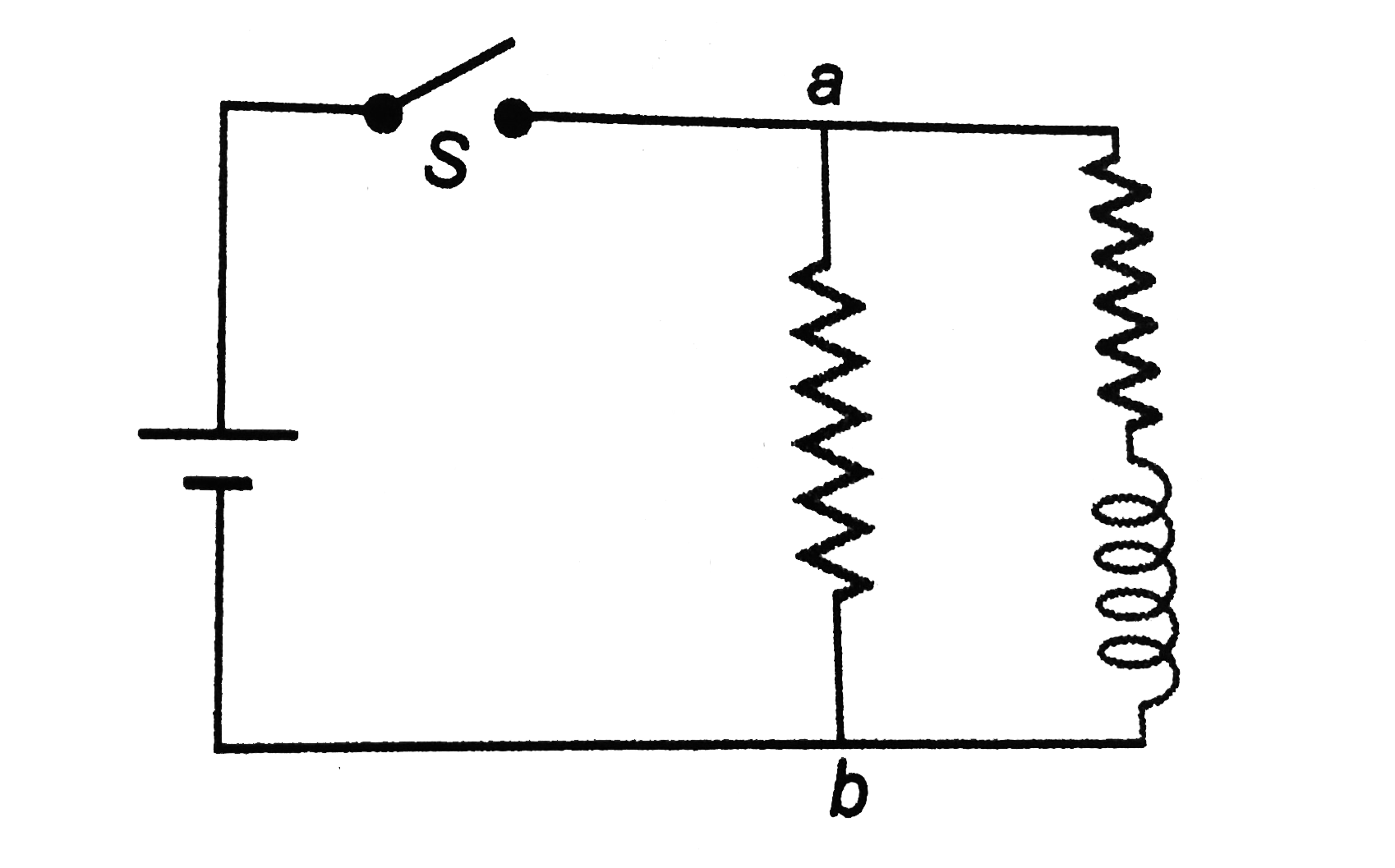The current generator Ig, shown in . Sends a constant current I through the circuit. The wire cd is fixed and ab is made to slide on the smooth, thick rails with a constant velocity v towards right. Each of these wire has resistance r. Find the current through the wire cd.

Initial Current passed =i
Hence initial emf=ir
emf due to motion of ab=Blv
Net emf =ir-Blv
Net resistance =2r
Hence Current passed =(ir-Blv)/(2r).
Topper's Solved these Questions
- ELECTROMAGNETIC INDUCTIONBOOK - HC VERMACHAPTER - ELECTROMAGNETIC INDUCTIONEXERCISE - EXERCISE
9 Videos
- ELECTROMAGNETIC INDUCTIONBOOK - HC VERMACHAPTER - ELECTROMAGNETIC INDUCTIONEXERCISE - Objective 2
10 Videos
- ELECTRIC FIELD AND POTENTIALBOOK - HC VERMACHAPTER - ELECTRIC FIELD AND POTENTIALEXERCISE - Exercises
75 Videos
- ELECTROMAGNETIC WAVESBOOK - HC VERMACHAPTER - ELECTROMAGNETIC WAVESEXERCISE - Exercises
9 Videos
Similar Questions
Figure shows a wire ab of length L and resistance R which can slide on a smooth pair of rails. Ig is current generator which supplies a constant current i in the circuit. If the wire ab slide at a speed v towards right, find the potential difference below a and b

(b) The current generator Ig show in the figure sends a constant current i through the circiut. The wire ab has a length L and mass m and can slide on the smooth horizontal rails connect to Ig . The entire system lies in a vertical magnetic field B . Find the velocity of the wire as a function of time.

(c) The system containing the rails and the wire of the previous part is kept vertically in a uniform horizontal magnetic field B that is perpendicular to the plane of the rails (figure). If is found that the wire stays in equilibrium. If th ewire ab is replaced by another wire of double its mass, how long will lit take in falling through a distance equal to its length?
The current generator Ig shown in figure sends a constant current i through the circuit. The wire cd is fixed and wire ab is made to slide on the smooth, thick rails with a constant velocity v toward right. Each of these wires has resistance r . Find the current through the wire cd .

View SolutionFind the current ( in ampere) through wire XY of the circuit shown in figure.

View Solution
Knowledge Check
Consider circuit as shown in figure. The current through wire AB is
 A1AB2AC3ADNone
A1AB2AC3ADNoneConsider the situation shown in the figure. The wire Ab is sliding on the fixed rails with a constant velocity. If the wire AB is replaced by semicircular wire, the magnitude of the induced current will
 AIncreaseBRemain the sameCdecreaseDIncrease or decrease depending on wheather the semicircle bulges towards the resistance or away from it
AIncreaseBRemain the sameCdecreaseDIncrease or decrease depending on wheather the semicircle bulges towards the resistance or away from itThe heat developed in an electric wire of resistance R by a current I for a time t is
AI2Rt4.2calBI2RCI2R4.2tcalDRt4.2I2cal
A long U-shaped wire of width l placed in a perpendicular uniform and constant magnetic field B (figure).A wire of length l is slid on the U-shaped wire with a constant velocity v towards right.The resistance of all the wires is r per unit length.At t=0, the sliding wire is close to the left edge of the fixed U-shaped wire.Draw an equivalent circuit diagram at time t, showing the induced emf as a battery.Calculate the current in the circuit.

View SolutionA constant current of 4A passes through a wire for 8s. Find total charge flowing through that wire in the given time interval.
View SolutionWhat is the effect on the magnetic needle in Oersted's experiment, when (1) a current is passed through the wire (2) the current through the wire is increased (3) The current through the wire to stopped (4) The current through the wire is reversed (5) The distance between jthe magnetic needle and the wire is increased , keeping the current through the wire constant ?
View SolutionThe potentiometer wire of resistance R is connected in series with a cell of e.m.f. E and of resistance Rh. The current flowing through the potentiometer wire is
View SolutionAssertion : In the circuit shown in figure, current in wire ab will become zero as soon as switch is opened.

Reason : A resistance does not oppose increase or decrease of current through it.
View Solution
